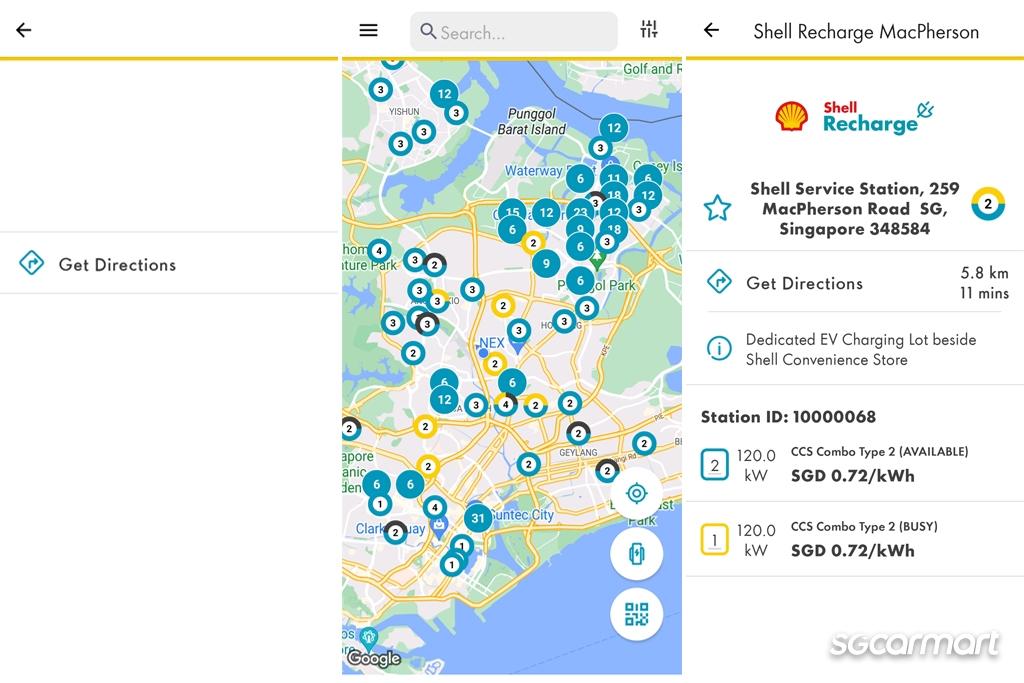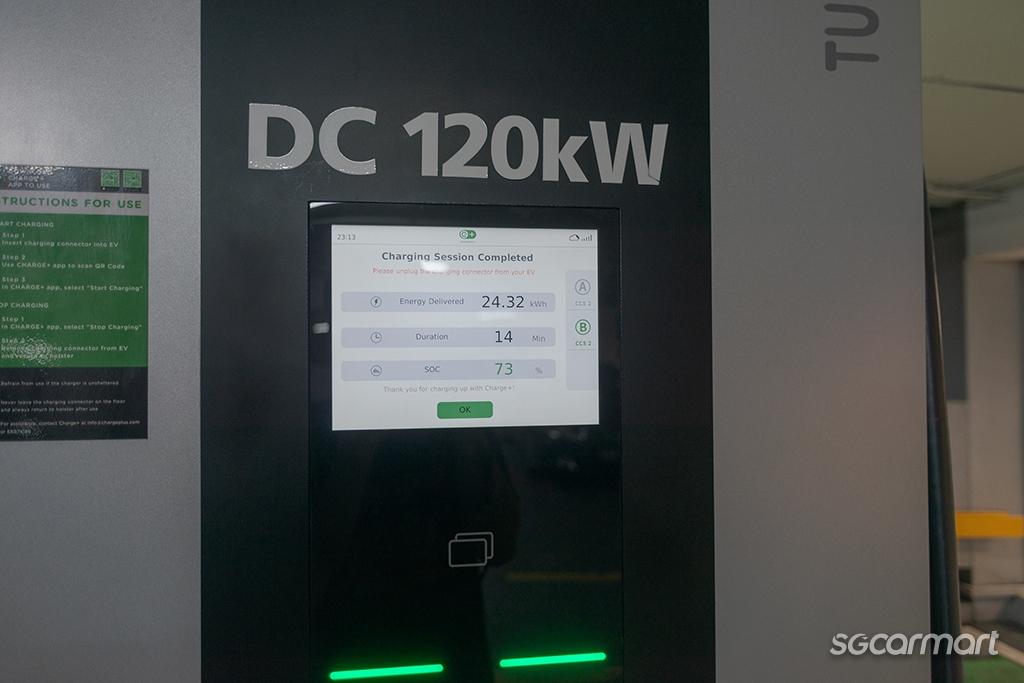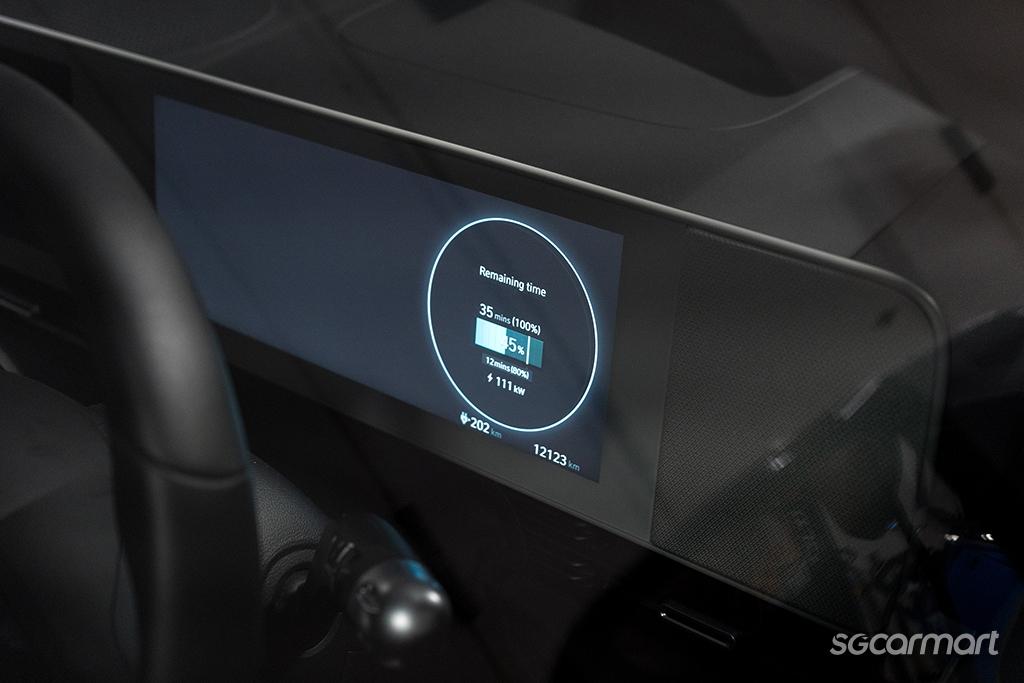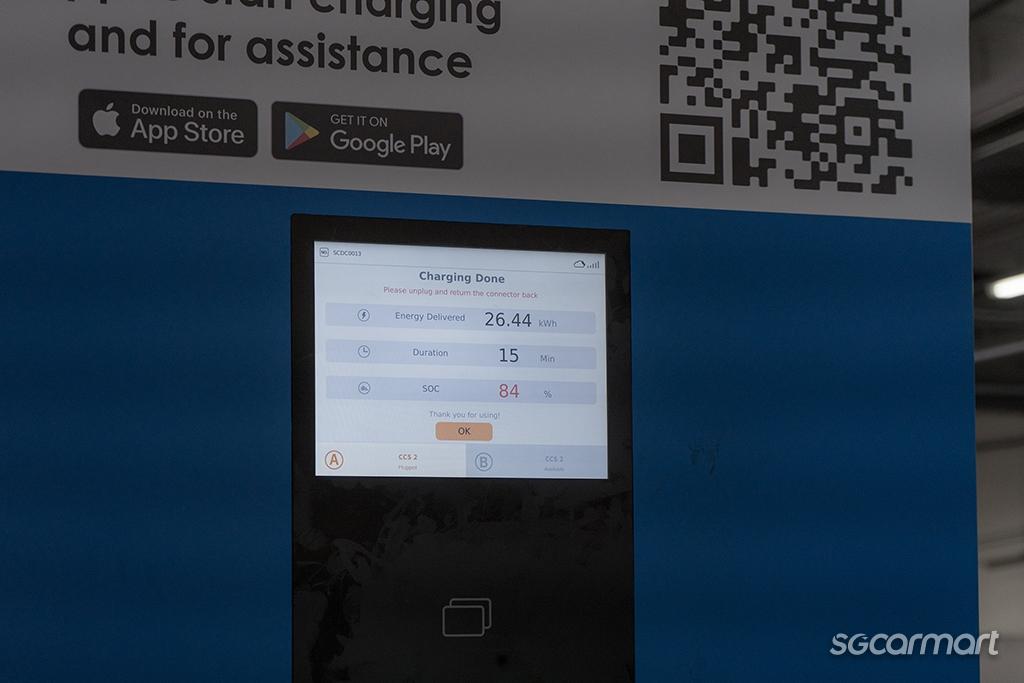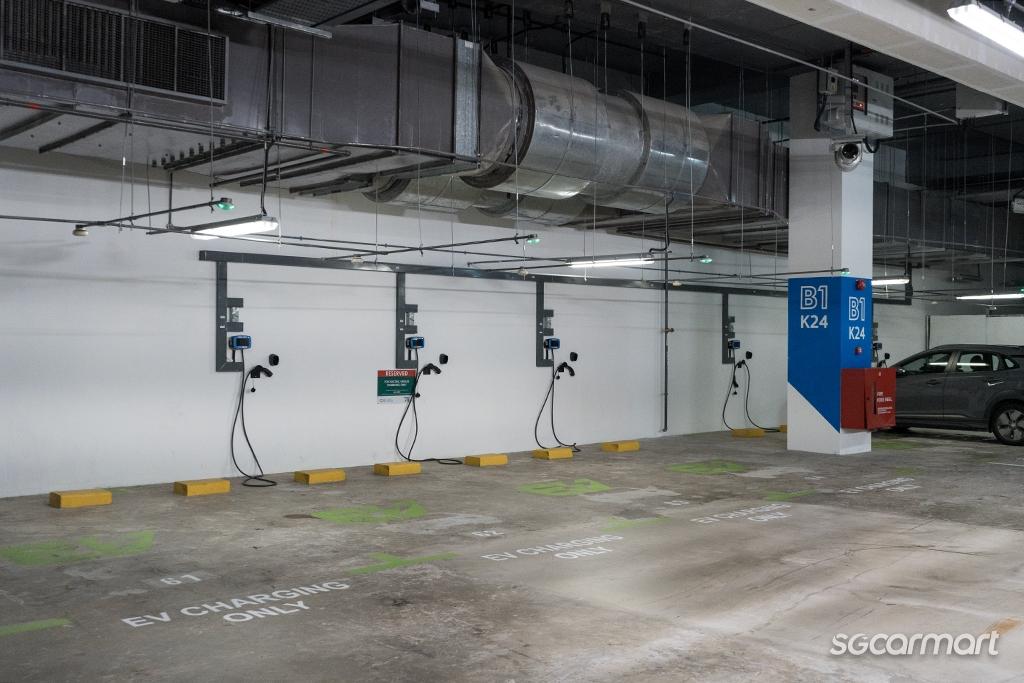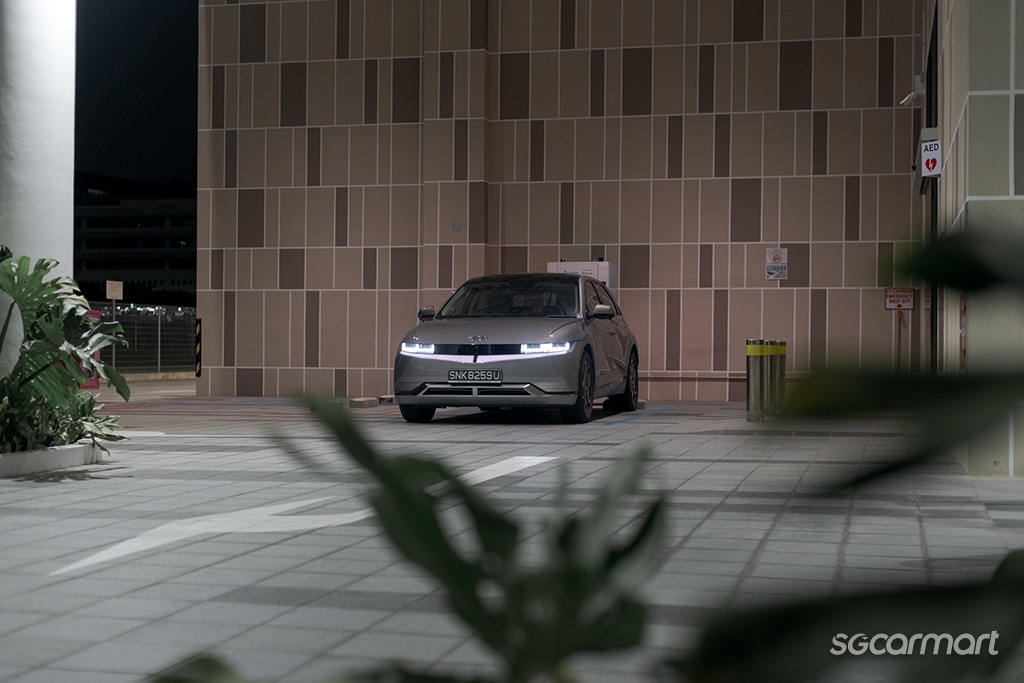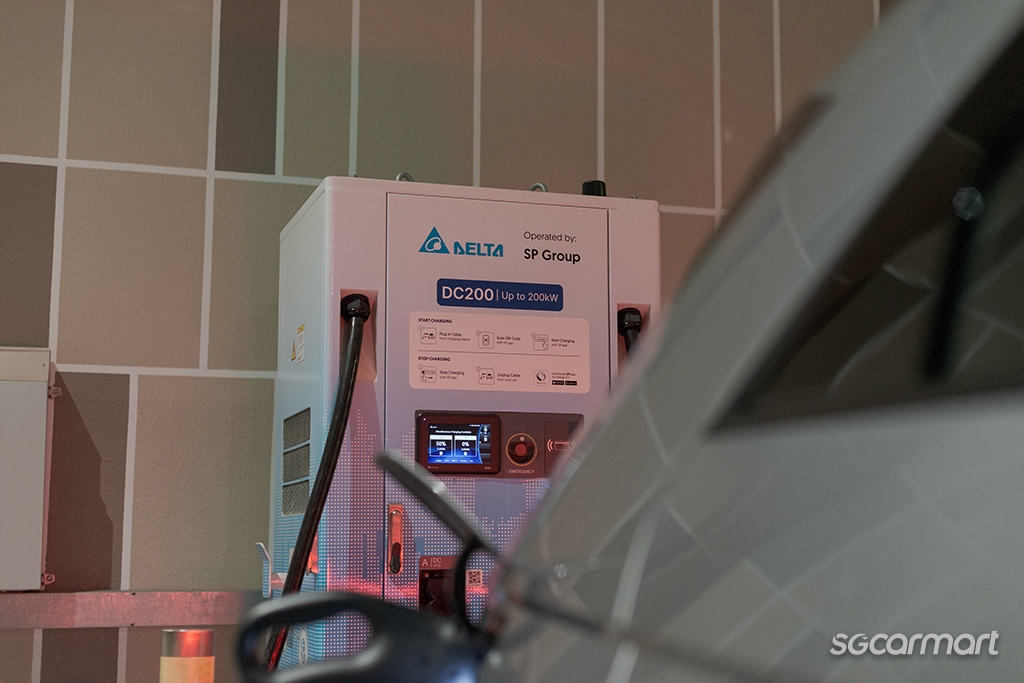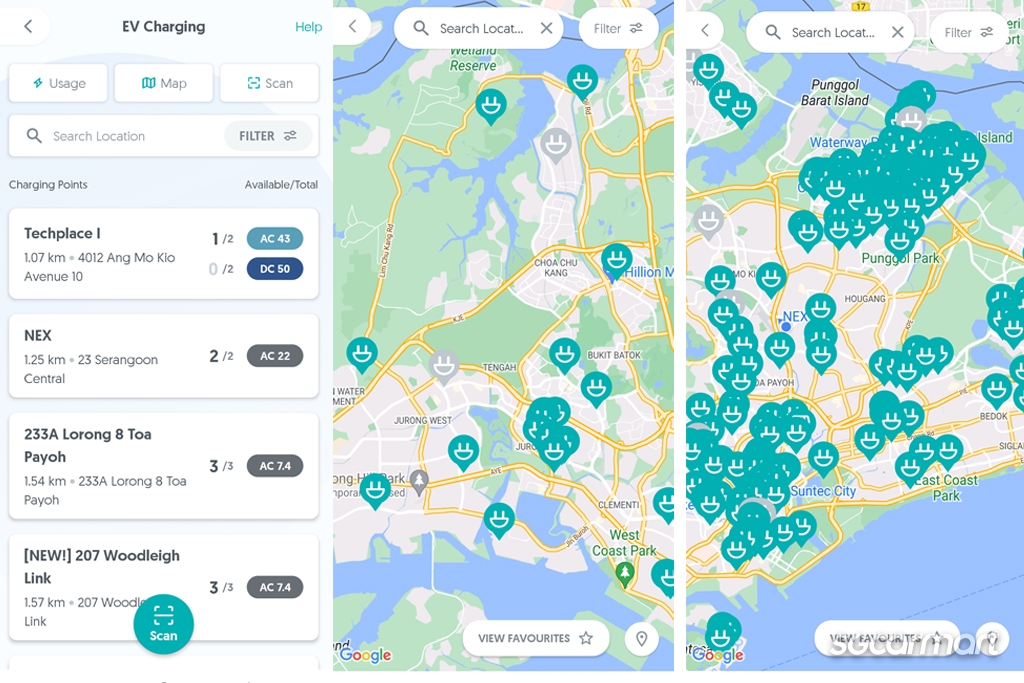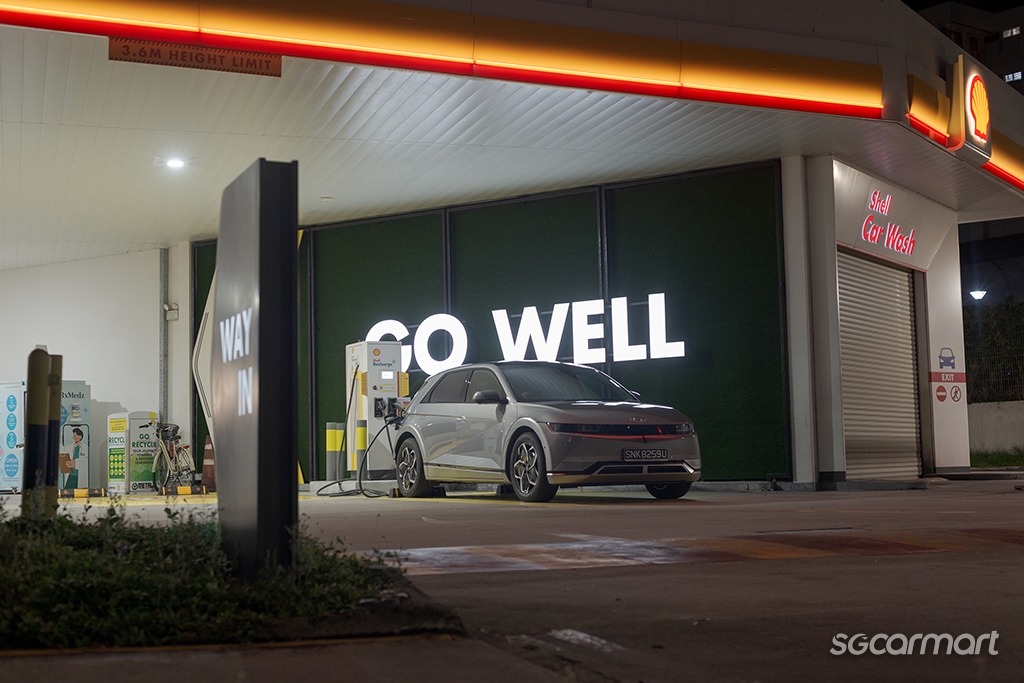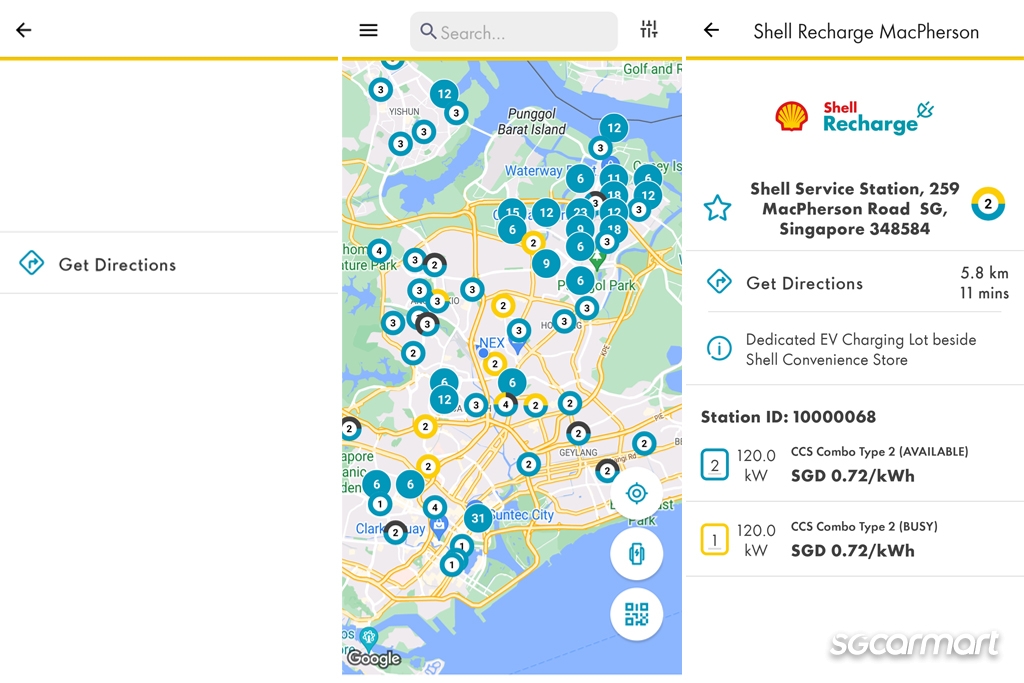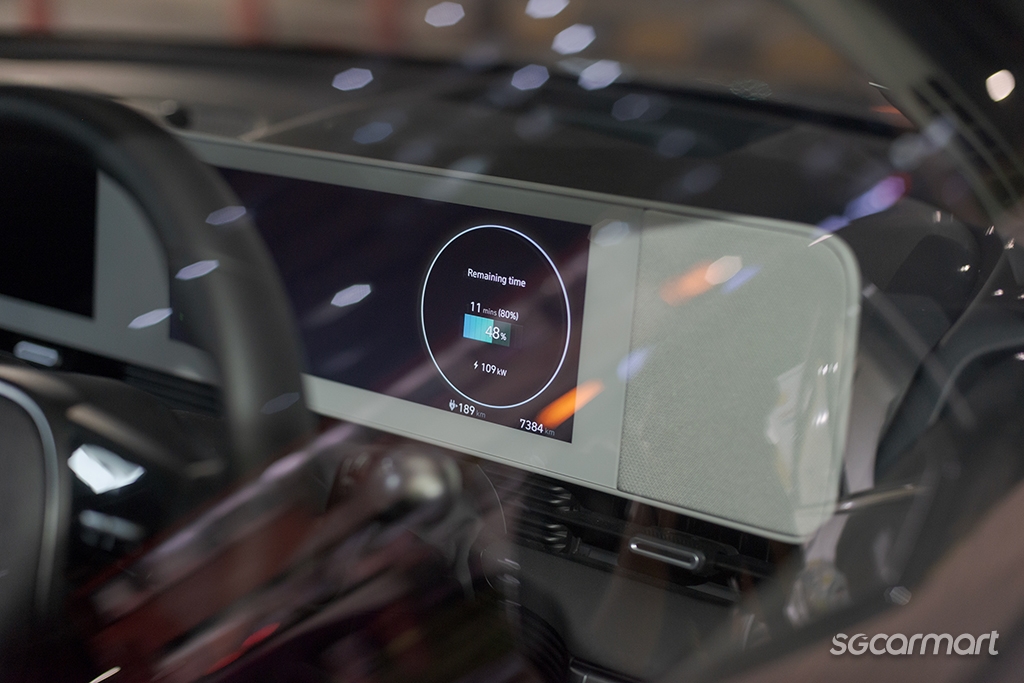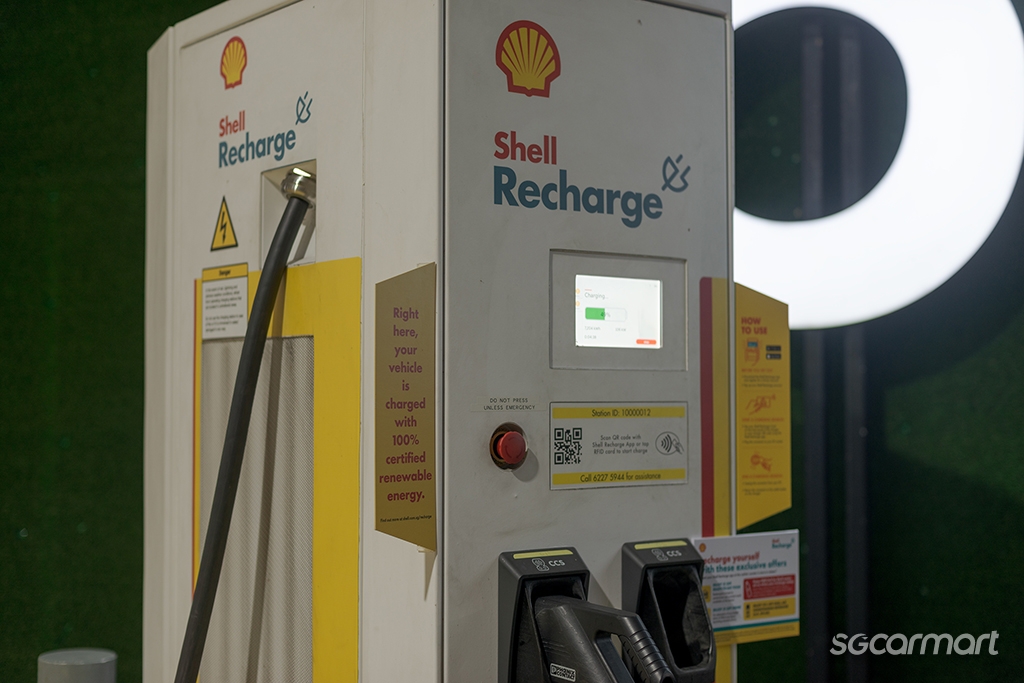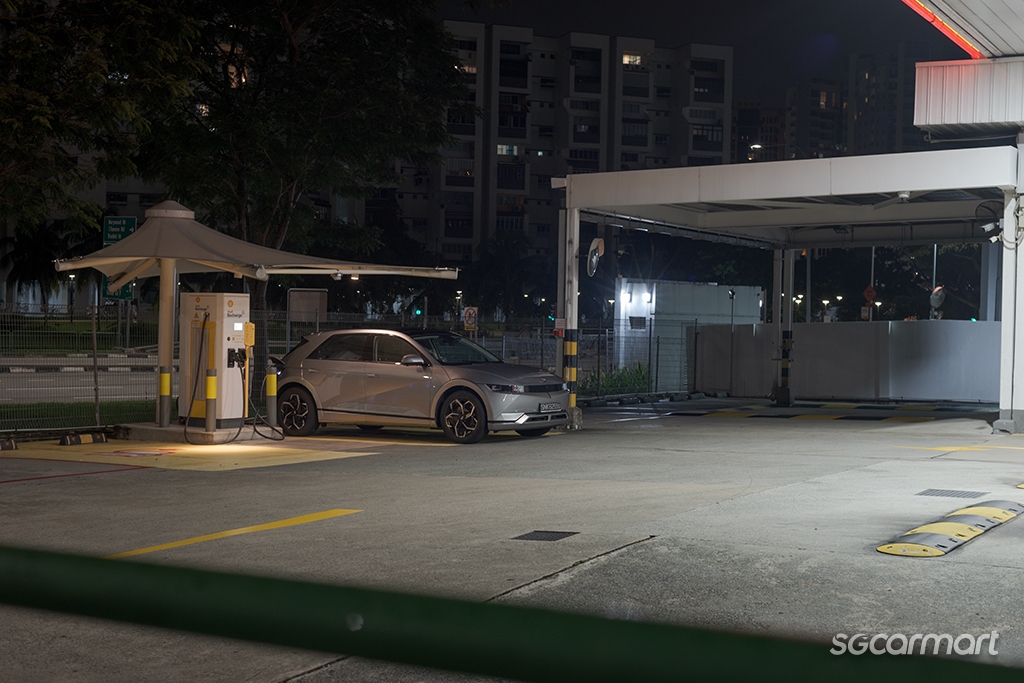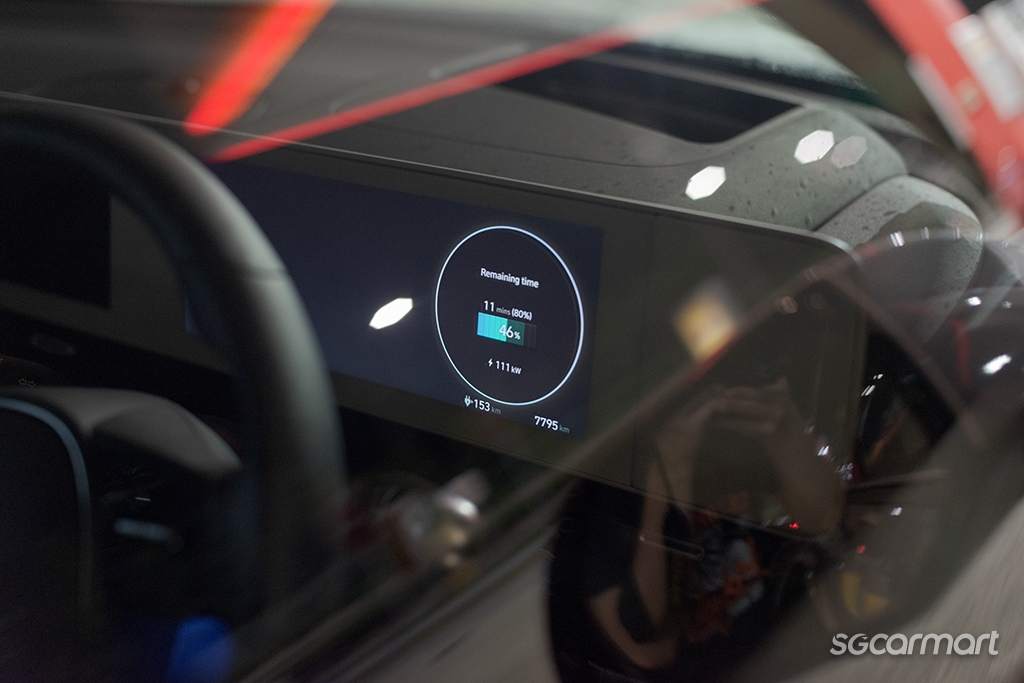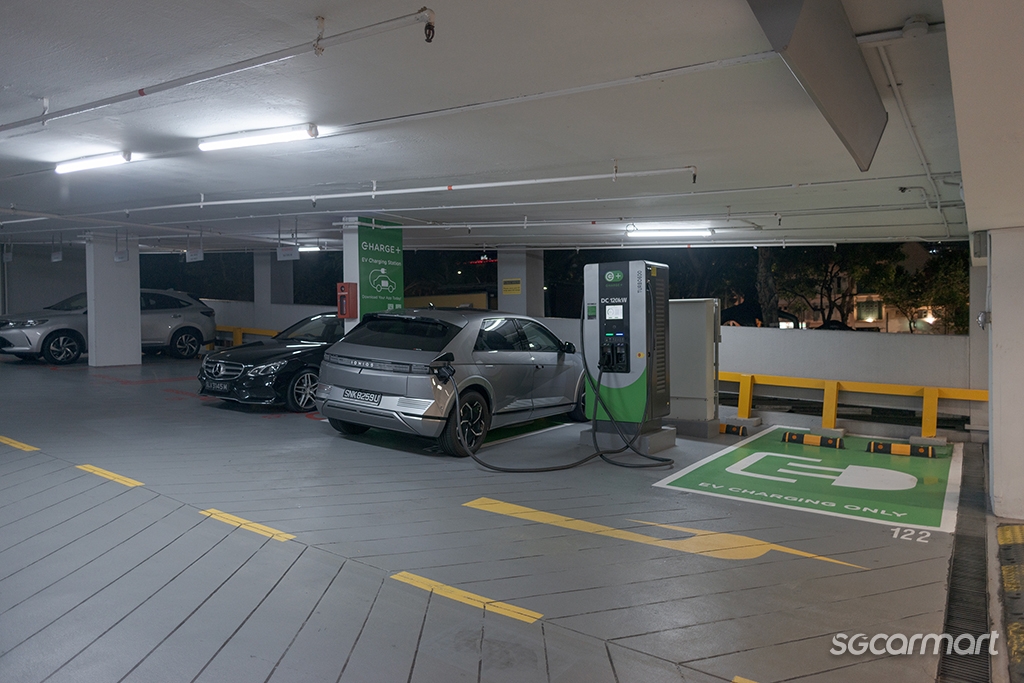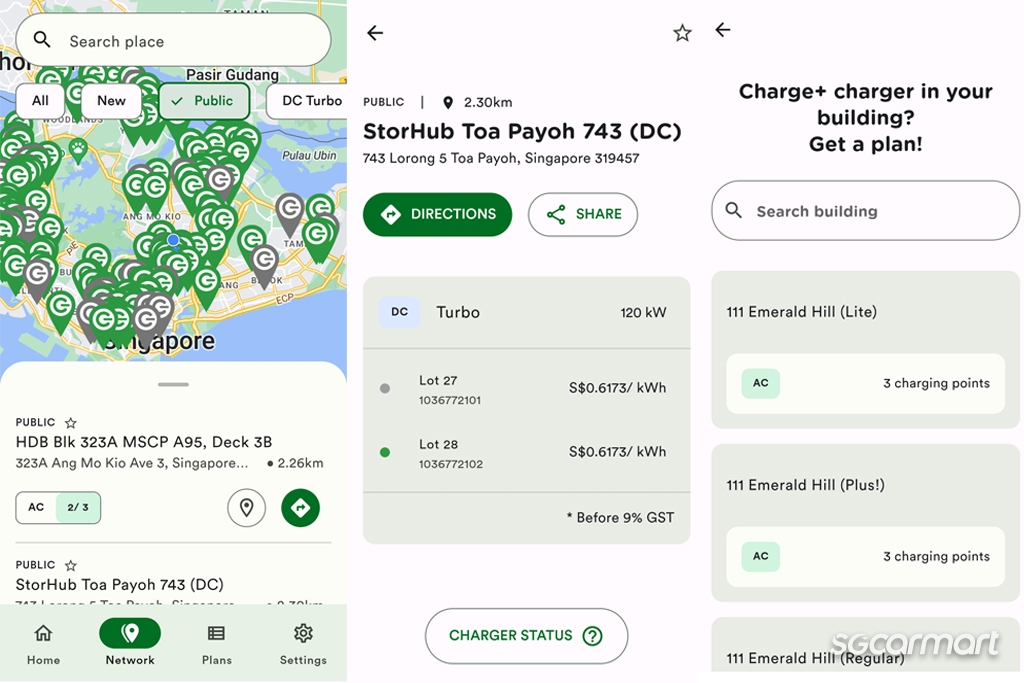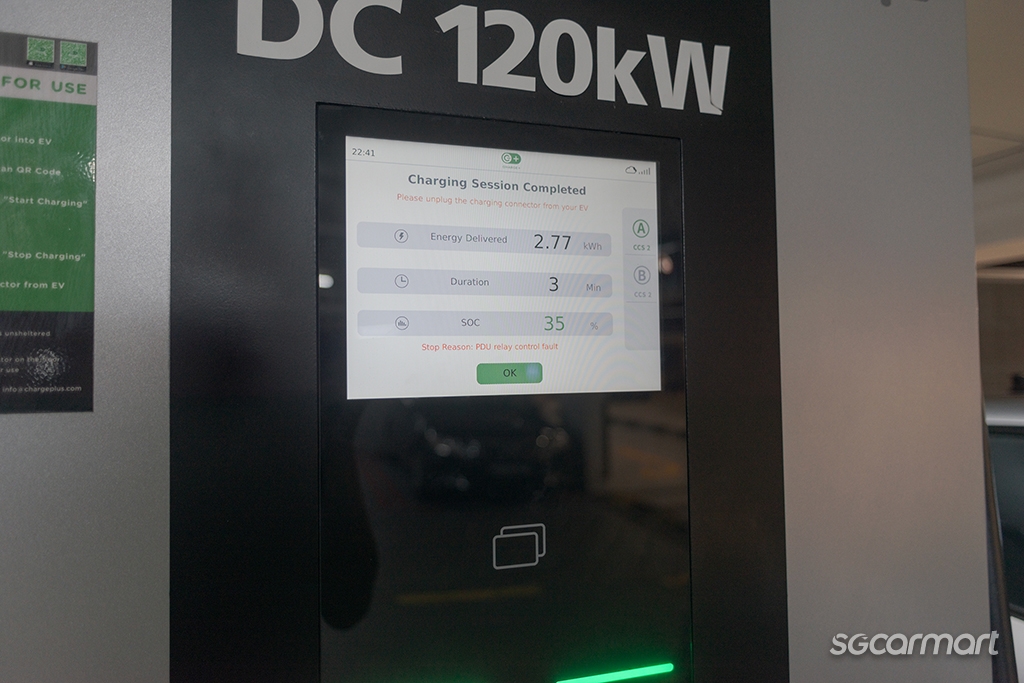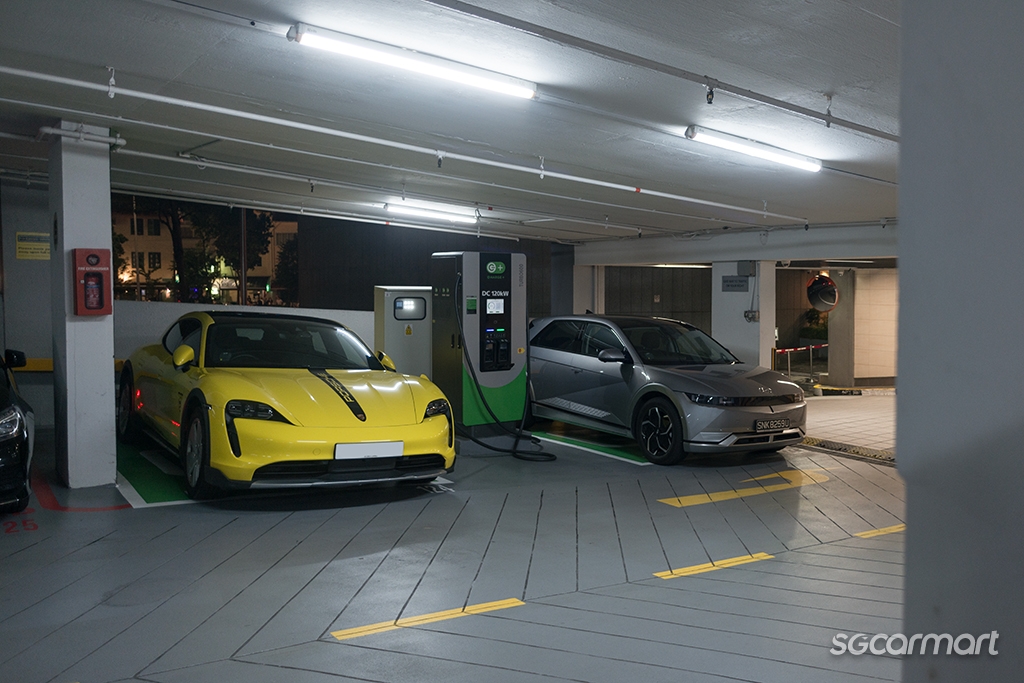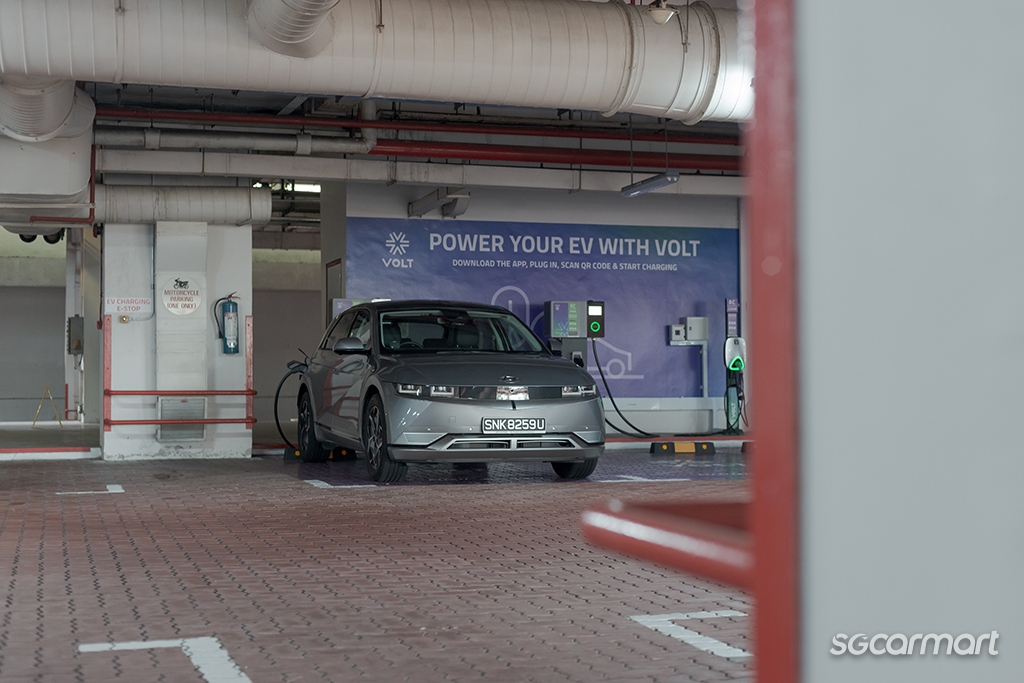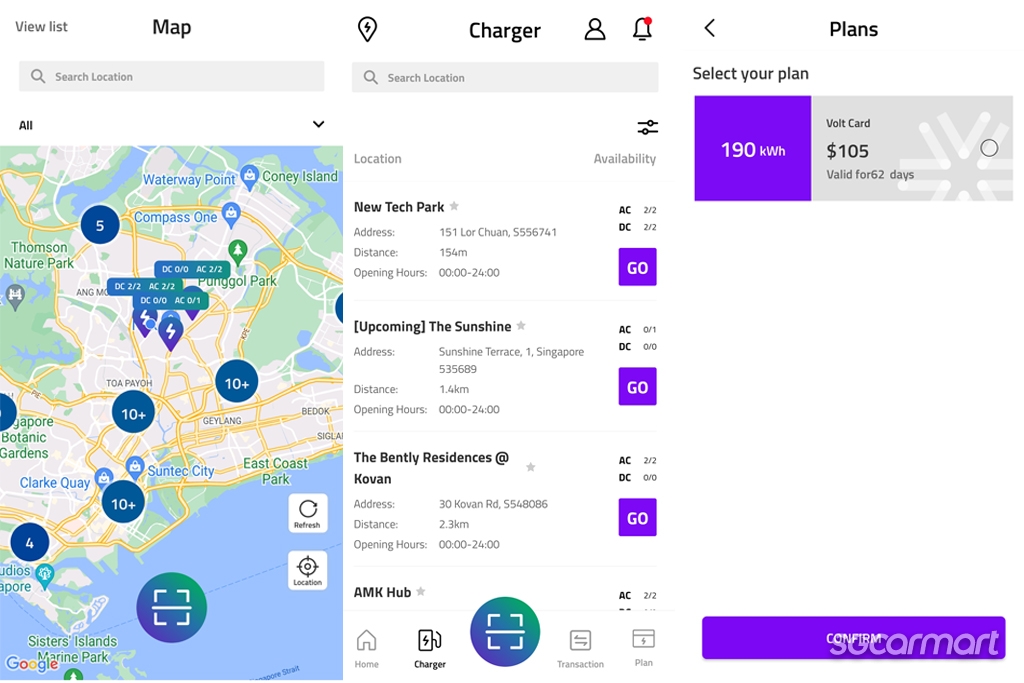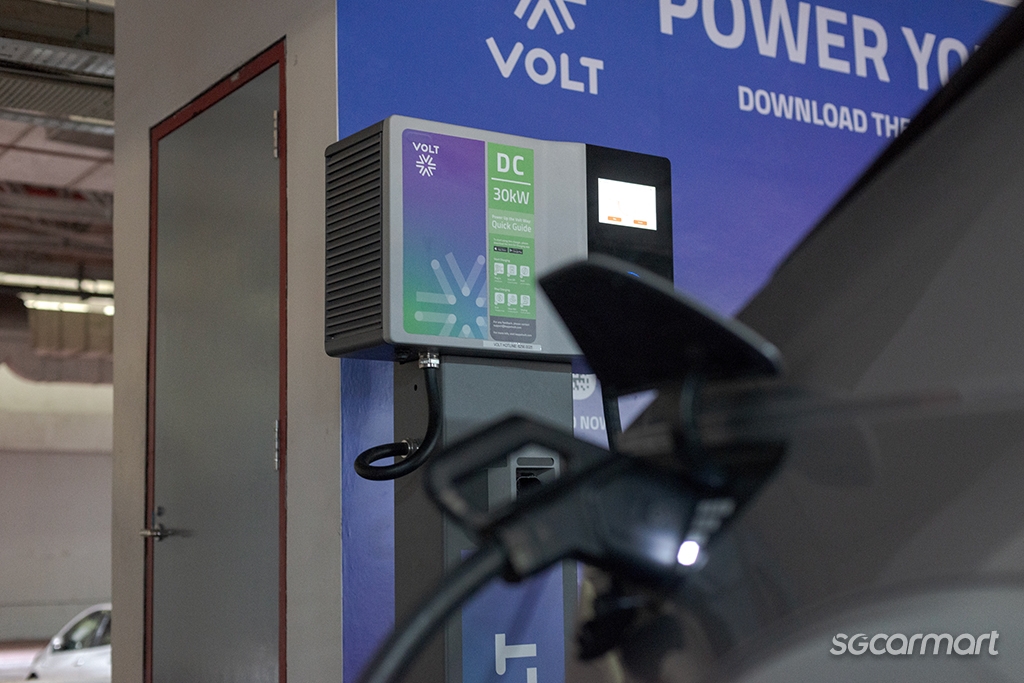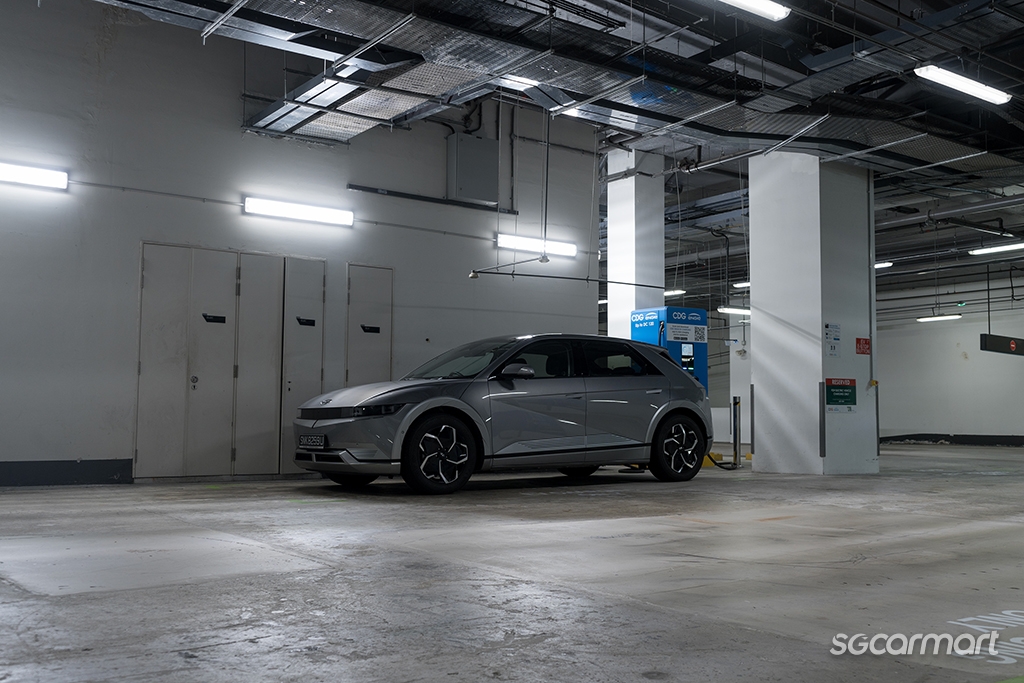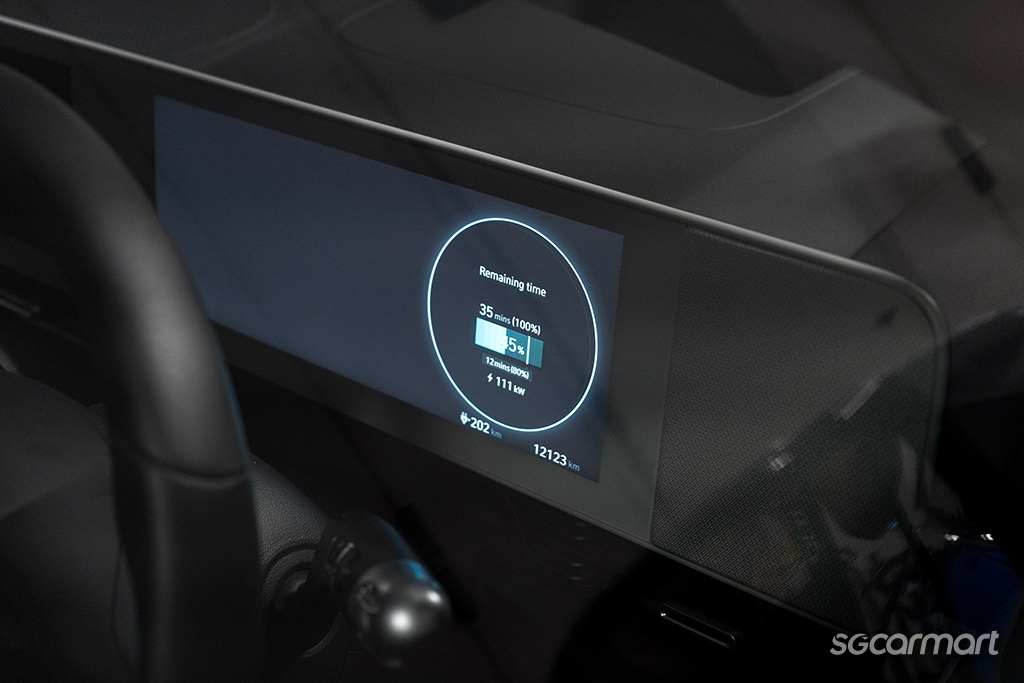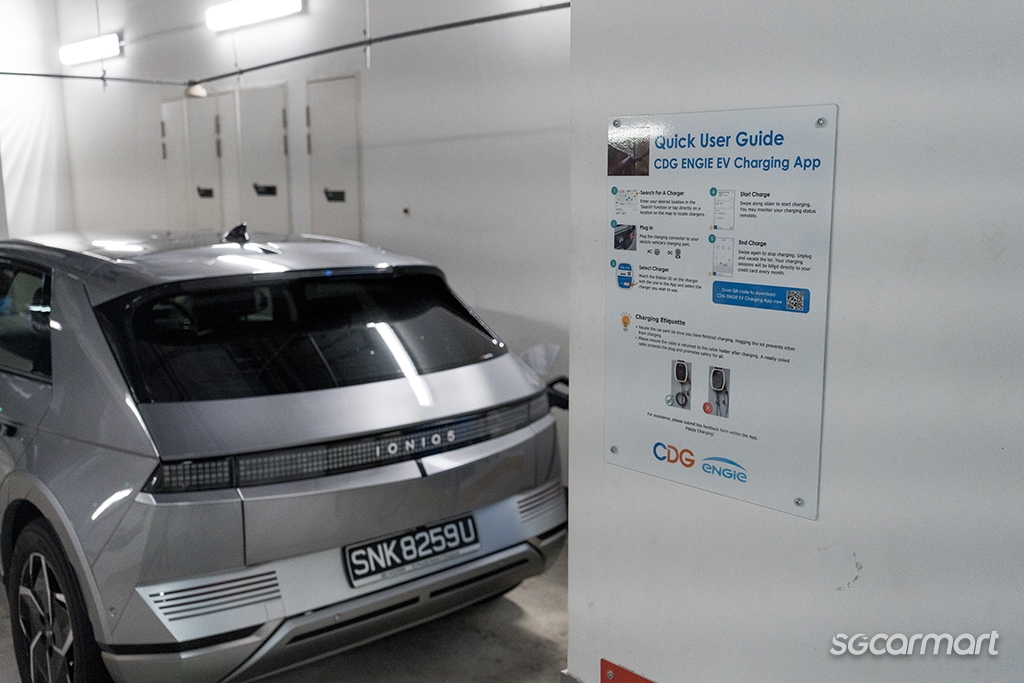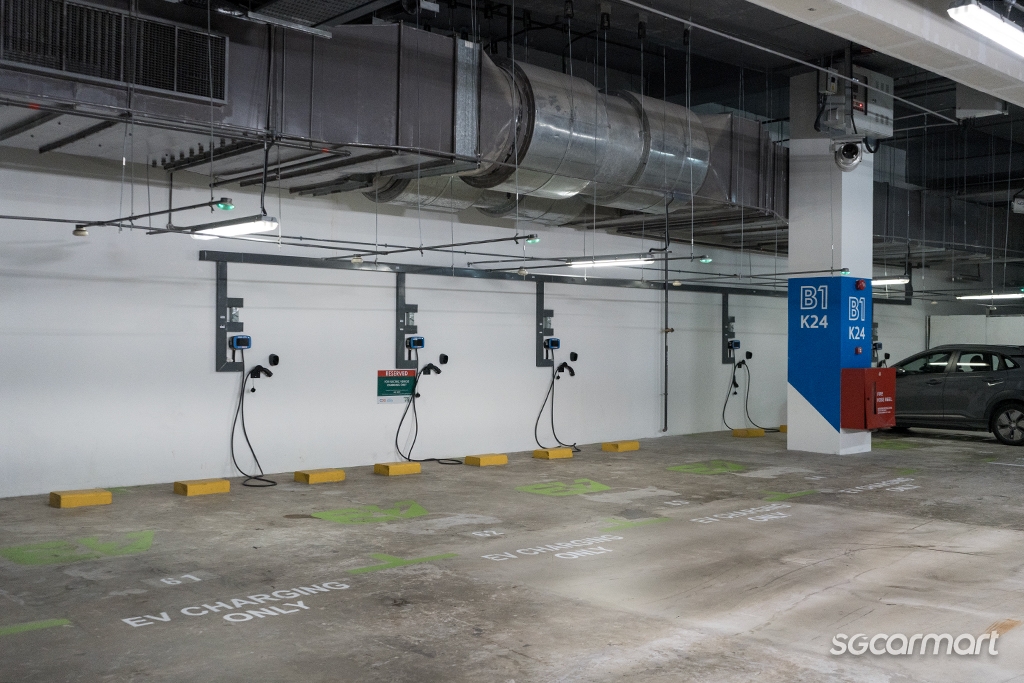Which electric vehicle charging provider should you use?
21 Mar 2024|53,220 views
So, you've got yourself a swanky new electric car and spent the last few hours soaking in all the thrills of instantaneous torque, or possibly even taken a bit of pride in accomplishing your last few commutes without generating any local emissions.
Driving an electric car is no doubt an exciting experience, but after your first days with the car, you'll notice that its batteries have been drawn down, and soon you'll need to stop by a charger to charge your car back up. So, which charging provider should you go to?
We assess the five largest electric vehicle charging operators here in Singapore with publicly available charging points in this article, although this could be revised at a later date as more charging operators proliferate here in Singapore.
First things first…
There are many factors that go into determining what is your ideal charging provider. The availability of chargers, of course, is likely the top priority for many.
But beyond just which provider is likely to have a charging point closest to you, there's also other factors that we have decided to assess in this test, including the ease-of-use of their respective apps, as well as the reliability of the chargers.
And for those who are always in a hurry, we also conducted a quick speed test of the most powerful charger available from each provider to see just what power you can realistically expect when time is of the essence. To ensure that each provider is given a fair test, we have opted to make use of the Singapore-made Ioniq 5 for each charging session. This car has an 800V architecture that allows it to charge up at up to 350kW, and so should have little difficulty keeping up with each of the charging stations we have identified, as the fastest of these stations offer a maximum charging power of 200kW.
These test charges were also all conducted without any other vehicle plugged into the neighbouring chargers to ensure that we could extract the very best charging power out of each charging session.
External factors, including the ambient temperature during the charging session (as stated by the vehicle itself), as well as the exact state-of-charge which the test was conducted, are also all stated in the respective sections below.
1. SP Group
SP Group aims to build Singapore's largest public high-power electric vehicle charging network, and currently claims to host more than 1,000 charging points at 300 different locations across our island.
Distribution of chargers:
As you might have guessed, SP Group's distribution of chargers is hard to beat. Those residing in districts including Tampines, Punggol, Queenstown, and around downtown will have the easiest time finding SP Group's slow chargers nearby. SP Group's fast chargers (50kW and above) are more prominent around Queenstown and downtown.
If you're staying in Hougang or Bedok, Chua Chu Kang, or Jurong West, be prepared to drive to a neighbouring district to find an SP charger.
User Interface:
The SP Group app is the only one of the five we tested here that comes with a separate electric vehicle charging page, since it also offers a host of services related to your domestic home utilities.
Once on the electric vehicle charging page, however, it is largely faultless. The app showcases a list of chargers available based on your current location, and those more visually inclined can opt to look for their next charger via a map.
Users are also offered the option to filter the available charging points based on the charging power they need from either the list or the map, and the per-kilowatt-hour prices for each charger is clearly indicated when filtering through the different chargers.
Reliability:
The Editorial team has yet to encounter issues with SP Group's chargers.
The SP Group app has a 3.9/5 rating on the Google Pay Store, however, practically all the negative reviews for the app we could see were submitted by people who ran into issues getting the app to correctly read their home electricity meter, or who had difficulty settling their domestic electricity bills.
Charging power test:
For this test, we headed to a 200kW charger location within the Trion Building in Kallang.
State-of-charge top up: From 32% to 72%
Ambient temperature: 28 degrees Celsius
If you're after a quick top up, this charger is hard to fault. We added a total of 23.9kWh to the Ioniq 5 in just 10 minutes of charging, which equates to an average charging power of close to 143kW. Peak charging power reached as high as 174kW at this charger.
Pricing:
SP Group currently charges $0.60/kWh for its slow chargers and 40kW and 43kW alternating current chargers. Its fast direct current chargers of 50kW and above will cost you $0.70/kWh.
Conclusion:
SP Group is the service provider to go to if you're looking for truly rapid charging, or if you're residing within districts including Tampines, Punggol or Queenstown.
2. Shell Recharge
Shell Recharge is said to offer electric vehicle chargers at more than half of the 56 Shell service stations across Singapore, and more than 150 charging locations available in various shopping centres and condominiums via the Shell Recharge app.
Distribution of chargers:
Those residing in Punggol, Sengkang, and Woodlands will find easy access to Shell Recharge's slower chargers located within carparks. Having said that, Shell Recharge also offers a cluster of chargers at Suntec City (a host of 22kW and 120kW chargers), while those in the east will be able to find plenty of charging points located within the carpark of Singapore Expo (offering charging power ranging from 11kW to 120kW).
User Interface:
The Shell Recharge app automatically takes you to a map-based view where you'll be able to quickly locate nearby chargers. The status of these chargers (whether they are available, offline, or currently occupied by another vehicle) is also clearly identified via the app's yellow and cyan colour scheme. Having said that, the app does not offer the option to filter available charging points by charging power.
The Shell Recharge app is the only electric vehicle charging app that I have used that frequently requires me to close and reload it on my phone as selecting a charging location frequently leads to the app displaying a near-empty screen.
Reliability:
The Shell Recharge app has a 3.7/5 rating on the Google Play Store (as of February 2024). However, this rating is for the international version of the app, and thus not entirely reflective of the reliability of Shell Singapore's local charging network. Since 11 January 2024, however, Shell has rolled out a new Shell Recharge Asia app. This new app will load the Singapore map on startup and promises greater accuracy when identifying chargers when a user scans its QR code.
The Shell Recharge Asia app has a rating of just 2.4/5 (as of 15 March 2024), although this is only with a total of 10 submitted reviews. Most of the complaints involve users encountering difficulties with getting credit cards to sync with the app, or with Shell's high per-kilowatt-hour prices.
I did once have a charger terminate my charging session early and indicate that the car was fully charged when using the chargers from Shell that used to be available at Our Tampines Hub.
Shell's fast chargers at Shell Tampines, Pasir Ris, and Lakeview will supply your car with certified renewable energy, however, we did not see charging power reach close to those claimed to be offered by the chargers
Charging power test:
For this test, we headed down to the 180kW charger at Shell Tampines. This Shell Recharge station, alongside the electric vehicle charging points Shell Lakeside and Shell Pasir Ris, are powered entirely by renewable energy thanks to solar panels located above the stations as well as from power purchased through certified renewable sources.
State-of-charge top-up: From 40% to 80%
Ambient temperature: 28 degrees Celsius
Our first fast charging session at Shell took us a total of 15 minutes to add 25.5kWh to the vehicle, averaging a power output of 102kW - far off the mark for what is claimed to be a 180kW charger.
Our second high-power charging test at Shell Lakeview saw charging power only reach an average of 112kW, far below the claimed 180kW maximum
To ensure that our first charging session was not a fluke, we repeated this test once again at a later date, this time at Shell Lakeview, but with the battery on the Ioniq 5 stating from a state-of-charge of just 23%, which should give the charger a better chance at posting a higher average charging power.
State-of-charge top-up: From 23% to 61%
Ambient temperature: 27 degrees Celsius
This time, we managed to top up a total of 27.2kWh into the Ioniq 5, a process which took a total of 14 minutes and 37 seconds. This equates to an average charging power of approximately 112kW.
When queried about the discrepancy between the stated charging power of the chargers and the actual power outputs which we observed, Shell stated that the battery energy storage system used to enable its fast-charging points charge up during the night. It stated that this may have caused the reduced charging power outputs that we observed. To be clear, we opted to conduct our charging test in the night so as to minimise the possibility of another car arriving and starting its charging session alongside ours, which could have seen us getting a lower than optimum charging power.
Pricing:
The Shell Recharge chargers are some of the most expensive around town. The 180kW chargers cost $0.76/kWh while its low-power chargers typically cost $0.60/kWh.
Conclusion:
Shell Recharge is easily the priciest of charging providers if you're looking at high-power charging, but its pleasant interface and decent distribution of high-power chargers mean it could be a great option to start an account with for those times when the charger you normally use is occupied, or when you're looking for a fast charger nearby.
3. Charge+
Charge+ surpassed the 1,000 charging point mark in mid-2023, a point which it states, makes it the largest electric vehicle charging operator here in Singapore. The firm also opened its first 120kW chargers at Skudai R&R Southbound in Malaysia in December 2023, part of its goal to build a 5,000km electric vehicle charging highway through the five countries of Singapore, Malaysia, Thailand, Cambodia, and Vietnam.
Distribution of chargers:
Charge+ distribution of chargers is rather comprehensive - the only districts we observed that lack easy access to its chargers were Bishan, Bedok, Tampines and Pasir Ris.
User Interface:
Just like the Shell Recharge app, Charge+ utilises a map to help you locate your next charging point, only here, the option to filter between different charger outputs is available right at the top of your phone screen.
Reliability:
Charge+ is rated at 3.2/5 on the Google Play Store, making it the lowest rated charging provider app of the five here. Most of the complaints with the app involved the need to top-up charging credits in $25 increments on the app. We have not encountered any issues yet when charging at Charge+. However, we did run into a faulty charger when performing the charging test!
Charging power test:
For this test, we headed to the 120kW charger at OCBC Centre.
State-of-charge top-up: From 36% to 75%
Ambient temperature: 28 degrees Celsius
Our first attempts to charge up at OCBC Centre proved unsuccessful, with the display at the charger simply informing us that there was a 'PDU relay control fault'.
The first charging plug that we utilised at the OCBC Centre constantly threw up an error - we were advised by the owner of the yellow Porsche Taycan to try the neighbouring plug instead, which thankfully worked
Thankfully, the owner of a Porsche Taycan utilising the neighbouring charging port informed us that the port we were attempting to use was not functional, so a quick swap later and our Ioniq 5 was once again getting fresh juice.
A point of note here: More information on what the customer should do ought to be given via the charging displays. There's no use informing a consumer that the PDU relay is faulty. Instead, advise should be given whether to simply reattempt the charging session, or move to another charger if the current one continues to be unusable. We think some sort of option for users to highlight inoperable chargers should also be offered in all charging apps.
The Charge+ charger at OCBC Centre took a total of 14 minutes to top-up the Ioniq 5 with a total of 24.3kWh. That works out to an average charging power of 104kW.
Pricing:
Charge+ charges $0.62/kWh for its 120kW chargers at OCBC Centre, and its 7.4kW chargers will cost you $0.56/kWh.
Conclusion:
Charge+ has chargers distributed across the island, a pleasant user interface, and a good network of high-power chargers that make it a good first option for all those new to the world of electric vehicles.
4. Volt
Volt's charging network may not be as large as Charge+ or SP Group's, but the provider's Facebook page comes with a long list of newly installed chargers that indicates that users will eventually be able to find chargers nearby just as easily as users of any of the other apps.
Distribution of chargers:
For now, those that are looking for chargers around downtown, Kallang, as well as Ubi are more likely to find Volt chargers nearby.
User Interface:
The Volt app loads up with a list of chargers available, sorted in order according to which are closest to your location, although the option to pick available chargers from a map is also offered.
The option to filter chargers according to the different power outputs is also offered here. Volt is additionally the only charging provider here that offers charging plans from which you'll be able to net yourself charging credits at per-kilowatt-hour prices lower than its standard prices, although these credits will expire after a certain number of days.
Reliability:
Volt has a 4.1 rating (out of a total of 16 reviews) on the Google Play Store. The Editorial Team has not encountered any issues with Volt's chargers, although we have noticed (just as some of the negative reviews on the app store point out) that some of the chargers come with minuscule QR codes that are difficult to find when you want to start your charging session.
Volt's charger at New Tech Park delivered a consistent charging power of 29.5kW all through our charging session
Charging power test:
For this test, we headed down to the 30kW chargers at New Tech Park, since they were the fastest available when these tests were done in December 2023. Users of the Volt app now have access to high-power charging at The Concourse along Beach Road.
State-of-charge top-up: 32% to 72%
Ambient temperature: 28 degrees Celsius
The charger at New Tech Park took a total of 52 minutes to top up the Ioniq 5 with 25.6kWh of energy, translating to an average charging power of 29.5kW.
Pricing:
Volt's 30kW chargers will cost you $0.65/kWh, although its 22kW chargers will set you back $0.57/kWh.
Conclusion:
5. CDG Engie
With over 250 charging locations located throughout our island, CDG Engie's charging network rivals those of SP Group or Charge+. The firm has signed an agreement with Yinson GreenTech, a charging provider in Malaysia, with the goal of providing a combined charging network comprising of a total of 5,000 charge points in Singapore and 3,000 in Malaysia by 2030.
CDG Engie offers plenty of chargers for those residing in the West of Singapore and is the only app here that offers pictures of the buildings where its chargers are located, which should make finding new charging locations easier. It does grey out charging points that are occupied, although we think Shell's use of contrasting colours makes judging how busy charging locations are easier
Distribution of chargers:
CDG Engie's chargers are well distributed across the island, with those residing in the West particularly well catered for. Having said that, those residing in Yishun and those who like to charge up your car while working downtown are less likely to find CDG Engie's chargers nearby.
User Interface:
You'll be looking for charging points via a map if you use the CDG Engie app, although a list of the nearest charging points is also available. You'll need to select each location to see just how many and which charging points are currently occupied here, however, just like the Shell Recharge app, CDG Engie allows you to save a few charging points within a 'favourites' tab.
For the more visually-inclined, CDG Engie is the only app here that not only offers written assistance, but also offers pictures of the charging location and the chargers themselves, so you know what to look out for when charging at a new location.
Reliability:
The CDG Engie app is rated at 3.9/5 on the Google Play Store. The negative reviews don't indicate any particular issue with the app, with users reporting having encountered a spread of issues ranging from difficulties navigating the app itself to issues with logins and ending charging sessions.
Charging power test:
For this test, we used a 120kW charger located at Our Tampines Hub, one of the 15 locations that offer 120kW chargers from this provider.
State-of-charge top-up: 44% to 84%
Ambient temperature: 28 degrees Celsius
The charger at Our Tampines Hub took a total of 16 minutes to top up the Ioniq 5 with 26.4kWh of energy, translating to an average charging power of 99kW.
Pricing:
CDG Engie charges $0.68/kWh for its fast chargers, with prices dropping to $0.61/kWh for its 7.4kW chargers.
Conclusion:
For those residing in the West of Singapore, CDG Engie looks to be a great option. Those who have difficulties navigating to new locations will also find the pictures of the buildings offered within the CDG Engie app a helpful feature.
Final conclusions
So, which charging provider should you utilise?
For those who are residing in the East and don't mind paying a little more for an uninterrupted charging experience, Shell Recharge would be a good bet. Its user interface makes it most apparent to a user which chargers are unoccupied, and with a total of two 120kW chargers and four 60kW chargers located at Singapore Expo (on top of 14 11kW chargers), you're unlikely to have to wait behind another car to charge up if you head here.
Shell also offers a cluster (of four 120kW and six 22kW chargers) at Suntec Convention Centre, although these are, from our experience, frequently occupied in the afternoons. Do also note that most of Shell's charging stations located within its service stations are 50kW chargers, as opposed to the 180kW ones which we visited here.
There's little that really separates the networks of Charge+, SP Group, and CDG Engie, so our advice here would be to look out for which has both a slow and fast charger near your home. A quick scan of the individual provider's maps suggests that those in the West are most likely to find CDG Engie's and Charge+'s chargers nearby, while those residing in the North-East and Eastern parts of Singapore are likely to be better off with SP Group.
However, the ambitious plans of all the charging providers to expand their networks could mean that this geographical differentiation could soon be moot. For those only interested in fast charging, both SP Group and Charge+ offer more locations that house chargers that offer more than 50kW of power.
We'd recommend joining Volt, meanwhile, more as a secondary option given its smaller number of total charging points offered. But its 30kW chargers make it perfect if you're looking for a top up and don't want to to be rushed through your meal or shopping. And with more fast chargers from the firm coming online, it could become just as competitive as rival options.
All app ratings and charging prices are correct as of 21 March 2024 unless otherwise stated.
Which charging provider is your favourite? Or is there any reason why you'd pick one over the others? Share with us your experience with the various charging providers so others can learn as well!
So, you've got yourself a swanky new electric car and spent the last few hours soaking in all the thrills of instantaneous torque, or possibly even taken a bit of pride in accomplishing your last few commutes without generating any local emissions.
Driving an electric car is no doubt an exciting experience, but after your first days with the car, you'll notice that its batteries have been drawn down, and soon you'll need to stop by a charger to charge your car back up. So, which charging provider should you go to?
We assess the five largest electric vehicle charging operators here in Singapore with publicly available charging points in this article, although this could be revised at a later date as more charging operators proliferate here in Singapore.
First things first…
There are many factors that go into determining what is your ideal charging provider. The availability of chargers, of course, is likely the top priority for many.
But beyond just which provider is likely to have a charging point closest to you, there's also other factors that we have decided to assess in this test, including the ease-of-use of their respective apps, as well as the reliability of the chargers.
And for those who are always in a hurry, we also conducted a quick speed test of the most powerful charger available from each provider to see just what power you can realistically expect when time is of the essence. To ensure that each provider is given a fair test, we have opted to make use of the Singapore-made Ioniq 5 for each charging session. This car has an 800V architecture that allows it to charge up at up to 350kW, and so should have little difficulty keeping up with each of the charging stations we have identified, as the fastest of these stations offer a maximum charging power of 200kW.
These test charges were also all conducted without any other vehicle plugged into the neighbouring chargers to ensure that we could extract the very best charging power out of each charging session.
External factors, including the ambient temperature during the charging session (as stated by the vehicle itself), as well as the exact state-of-charge which the test was conducted, are also all stated in the respective sections below.
1. SP Group
SP Group aims to build Singapore's largest public high-power electric vehicle charging network, and currently claims to host more than 1,000 charging points at 300 different locations across our island.
Distribution of chargers:
As you might have guessed, SP Group's distribution of chargers is hard to beat. Those residing in districts including Tampines, Punggol, Queenstown, and around downtown will have the easiest time finding SP Group's slow chargers nearby. SP Group's fast chargers (50kW and above) are more prominent around Queenstown and downtown.
If you're staying in Hougang or Bedok, Chua Chu Kang, or Jurong West, be prepared to drive to a neighbouring district to find an SP charger.
User Interface:
The SP Group app is the only one of the five we tested here that comes with a separate electric vehicle charging page, since it also offers a host of services related to your domestic home utilities.
Once on the electric vehicle charging page, however, it is largely faultless. The app showcases a list of chargers available based on your current location, and those more visually inclined can opt to look for their next charger via a map.
Users are also offered the option to filter the available charging points based on the charging power they need from either the list or the map, and the per-kilowatt-hour prices for each charger is clearly indicated when filtering through the different chargers.
Reliability:
The Editorial team has yet to encounter issues with SP Group's chargers.
The SP Group app has a 3.9/5 rating on the Google Pay Store, however, practically all the negative reviews for the app we could see were submitted by people who ran into issues getting the app to correctly read their home electricity meter, or who had difficulty settling their domestic electricity bills.
Charging power test:
For this test, we headed to a 200kW charger location within the Trion Building in Kallang.
State-of-charge top up: From 32% to 72%
Ambient temperature: 28 degrees Celsius
If you're after a quick top up, this charger is hard to fault. We added a total of 23.9kWh to the Ioniq 5 in just 10 minutes of charging, which equates to an average charging power of close to 143kW. Peak charging power reached as high as 174kW at this charger.
Pricing:
SP Group currently charges $0.60/kWh for its slow chargers and 40kW and 43kW alternating current chargers. Its fast direct current chargers of 50kW and above will cost you $0.70/kWh.
Conclusion:
SP Group is the service provider to go to if you're looking for truly rapid charging, or if you're residing within districts including Tampines, Punggol or Queenstown.
2. Shell Recharge
Shell Recharge is said to offer electric vehicle chargers at more than half of the 56 Shell service stations across Singapore, and more than 150 charging locations available in various shopping centres and condominiums via the Shell Recharge app.
Distribution of chargers:
Those residing in Punggol, Sengkang, and Woodlands will find easy access to Shell Recharge's slower chargers located within carparks. Having said that, Shell Recharge also offers a cluster of chargers at Suntec City (a host of 22kW and 120kW chargers), while those in the east will be able to find plenty of charging points located within the carpark of Singapore Expo (offering charging power ranging from 11kW to 120kW).
User Interface:
The Shell Recharge app automatically takes you to a map-based view where you'll be able to quickly locate nearby chargers. The status of these chargers (whether they are available, offline, or currently occupied by another vehicle) is also clearly identified via the app's yellow and cyan colour scheme. Having said that, the app does not offer the option to filter available charging points by charging power.
The Shell Recharge app is the only electric vehicle charging app that I have used that frequently requires me to close and reload it on my phone as selecting a charging location frequently leads to the app displaying a near-empty screen.
Reliability:
The Shell Recharge app has a 3.7/5 rating on the Google Play Store (as of February 2024). However, this rating is for the international version of the app, and thus not entirely reflective of the reliability of Shell Singapore's local charging network. Since 11 January 2024, however, Shell has rolled out a new Shell Recharge Asia app. This new app will load the Singapore map on startup and promises greater accuracy when identifying chargers when a user scans its QR code.
The Shell Recharge Asia app has a rating of just 2.4/5 (as of 15 March 2024), although this is only with a total of 10 submitted reviews. Most of the complaints involve users encountering difficulties with getting credit cards to sync with the app, or with Shell's high per-kilowatt-hour prices.
I did once have a charger terminate my charging session early and indicate that the car was fully charged when using the chargers from Shell that used to be available at Our Tampines Hub.
Shell's fast chargers at Shell Tampines, Pasir Ris, and Lakeview will supply your car with certified renewable energy, however, we did not see charging power reach close to those claimed to be offered by the chargers
Charging power test:
For this test, we headed down to the 180kW charger at Shell Tampines. This Shell Recharge station, alongside the electric vehicle charging points Shell Lakeside and Shell Pasir Ris, are powered entirely by renewable energy thanks to solar panels located above the stations as well as from power purchased through certified renewable sources.
State-of-charge top-up: From 40% to 80%
Ambient temperature: 28 degrees Celsius
Our first fast charging session at Shell took us a total of 15 minutes to add 25.5kWh to the vehicle, averaging a power output of 102kW - far off the mark for what is claimed to be a 180kW charger.
Our second high-power charging test at Shell Lakeview saw charging power only reach an average of 112kW, far below the claimed 180kW maximum
To ensure that our first charging session was not a fluke, we repeated this test once again at a later date, this time at Shell Lakeview, but with the battery on the Ioniq 5 stating from a state-of-charge of just 23%, which should give the charger a better chance at posting a higher average charging power.
State-of-charge top-up: From 23% to 61%
Ambient temperature: 27 degrees Celsius
This time, we managed to top up a total of 27.2kWh into the Ioniq 5, a process which took a total of 14 minutes and 37 seconds. This equates to an average charging power of approximately 112kW.
When queried about the discrepancy between the stated charging power of the chargers and the actual power outputs which we observed, Shell stated that the battery energy storage system used to enable its fast-charging points charge up during the night. It stated that this may have caused the reduced charging power outputs that we observed. To be clear, we opted to conduct our charging test in the night so as to minimise the possibility of another car arriving and starting its charging session alongside ours, which could have seen us getting a lower than optimum charging power.
Pricing:
The Shell Recharge chargers are some of the most expensive around town. The 180kW chargers cost $0.76/kWh while its low-power chargers typically cost $0.60/kWh.
Conclusion:
Shell Recharge is easily the priciest of charging providers if you're looking at high-power charging, but its pleasant interface and decent distribution of high-power chargers mean it could be a great option to start an account with for those times when the charger you normally use is occupied, or when you're looking for a fast charger nearby.
3. Charge+
Charge+ surpassed the 1,000 charging point mark in mid-2023, a point which it states, makes it the largest electric vehicle charging operator here in Singapore. The firm also opened its first 120kW chargers at Skudai R&R Southbound in Malaysia in December 2023, part of its goal to build a 5,000km electric vehicle charging highway through the five countries of Singapore, Malaysia, Thailand, Cambodia, and Vietnam.
Distribution of chargers:
Charge+ distribution of chargers is rather comprehensive - the only districts we observed that lack easy access to its chargers were Bishan, Bedok, Tampines and Pasir Ris.
User Interface:
Just like the Shell Recharge app, Charge+ utilises a map to help you locate your next charging point, only here, the option to filter between different charger outputs is available right at the top of your phone screen.
Reliability:
Charge+ is rated at 3.2/5 on the Google Play Store, making it the lowest rated charging provider app of the five here. Most of the complaints with the app involved the need to top-up charging credits in $25 increments on the app. We have not encountered any issues yet when charging at Charge+. However, we did run into a faulty charger when performing the charging test!
Charging power test:
For this test, we headed to the 120kW charger at OCBC Centre.
State-of-charge top-up: From 36% to 75%
Ambient temperature: 28 degrees Celsius
Our first attempts to charge up at OCBC Centre proved unsuccessful, with the display at the charger simply informing us that there was a 'PDU relay control fault'.
The first charging plug that we utilised at the OCBC Centre constantly threw up an error - we were advised by the owner of the yellow Porsche Taycan to try the neighbouring plug instead, which thankfully worked
Thankfully, the owner of a Porsche Taycan utilising the neighbouring charging port informed us that the port we were attempting to use was not functional, so a quick swap later and our Ioniq 5 was once again getting fresh juice.
A point of note here: More information on what the customer should do ought to be given via the charging displays. There's no use informing a consumer that the PDU relay is faulty. Instead, advise should be given whether to simply reattempt the charging session, or move to another charger if the current one continues to be unusable. We think some sort of option for users to highlight inoperable chargers should also be offered in all charging apps.
The Charge+ charger at OCBC Centre took a total of 14 minutes to top-up the Ioniq 5 with a total of 24.3kWh. That works out to an average charging power of 104kW.
Pricing:
Charge+ charges $0.62/kWh for its 120kW chargers at OCBC Centre, and its 7.4kW chargers will cost you $0.56/kWh.
Conclusion:
Charge+ has chargers distributed across the island, a pleasant user interface, and a good network of high-power chargers that make it a good first option for all those new to the world of electric vehicles.
4. Volt
Volt's charging network may not be as large as Charge+ or SP Group's, but the provider's Facebook page comes with a long list of newly installed chargers that indicates that users will eventually be able to find chargers nearby just as easily as users of any of the other apps.
Distribution of chargers:
For now, those that are looking for chargers around downtown, Kallang, as well as Ubi are more likely to find Volt chargers nearby.
User Interface:
The Volt app loads up with a list of chargers available, sorted in order according to which are closest to your location, although the option to pick available chargers from a map is also offered.
The option to filter chargers according to the different power outputs is also offered here. Volt is additionally the only charging provider here that offers charging plans from which you'll be able to net yourself charging credits at per-kilowatt-hour prices lower than its standard prices, although these credits will expire after a certain number of days.
Reliability:
Volt has a 4.1 rating (out of a total of 16 reviews) on the Google Play Store. The Editorial Team has not encountered any issues with Volt's chargers, although we have noticed (just as some of the negative reviews on the app store point out) that some of the chargers come with minuscule QR codes that are difficult to find when you want to start your charging session.
Volt's charger at New Tech Park delivered a consistent charging power of 29.5kW all through our charging session
Charging power test:
For this test, we headed down to the 30kW chargers at New Tech Park, since they were the fastest available when these tests were done in December 2023. Users of the Volt app now have access to high-power charging at The Concourse along Beach Road.
State-of-charge top-up: 32% to 72%
Ambient temperature: 28 degrees Celsius
The charger at New Tech Park took a total of 52 minutes to top up the Ioniq 5 with 25.6kWh of energy, translating to an average charging power of 29.5kW.
Pricing:
Volt's 30kW chargers will cost you $0.65/kWh, although its 22kW chargers will set you back $0.57/kWh.
Conclusion:
5. CDG Engie
With over 250 charging locations located throughout our island, CDG Engie's charging network rivals those of SP Group or Charge+. The firm has signed an agreement with Yinson GreenTech, a charging provider in Malaysia, with the goal of providing a combined charging network comprising of a total of 5,000 charge points in Singapore and 3,000 in Malaysia by 2030.
CDG Engie offers plenty of chargers for those residing in the West of Singapore and is the only app here that offers pictures of the buildings where its chargers are located, which should make finding new charging locations easier. It does grey out charging points that are occupied, although we think Shell's use of contrasting colours makes judging how busy charging locations are easier
Distribution of chargers:
CDG Engie's chargers are well distributed across the island, with those residing in the West particularly well catered for. Having said that, those residing in Yishun and those who like to charge up your car while working downtown are less likely to find CDG Engie's chargers nearby.
User Interface:
You'll be looking for charging points via a map if you use the CDG Engie app, although a list of the nearest charging points is also available. You'll need to select each location to see just how many and which charging points are currently occupied here, however, just like the Shell Recharge app, CDG Engie allows you to save a few charging points within a 'favourites' tab.
For the more visually-inclined, CDG Engie is the only app here that not only offers written assistance, but also offers pictures of the charging location and the chargers themselves, so you know what to look out for when charging at a new location.
Reliability:
The CDG Engie app is rated at 3.9/5 on the Google Play Store. The negative reviews don't indicate any particular issue with the app, with users reporting having encountered a spread of issues ranging from difficulties navigating the app itself to issues with logins and ending charging sessions.
Charging power test:
For this test, we used a 120kW charger located at Our Tampines Hub, one of the 15 locations that offer 120kW chargers from this provider.
State-of-charge top-up: 44% to 84%
Ambient temperature: 28 degrees Celsius
The charger at Our Tampines Hub took a total of 16 minutes to top up the Ioniq 5 with 26.4kWh of energy, translating to an average charging power of 99kW.
Pricing:
CDG Engie charges $0.68/kWh for its fast chargers, with prices dropping to $0.61/kWh for its 7.4kW chargers.
Conclusion:
For those residing in the West of Singapore, CDG Engie looks to be a great option. Those who have difficulties navigating to new locations will also find the pictures of the buildings offered within the CDG Engie app a helpful feature.
Final conclusions
So, which charging provider should you utilise?
For those who are residing in the East and don't mind paying a little more for an uninterrupted charging experience, Shell Recharge would be a good bet. Its user interface makes it most apparent to a user which chargers are unoccupied, and with a total of two 120kW chargers and four 60kW chargers located at Singapore Expo (on top of 14 11kW chargers), you're unlikely to have to wait behind another car to charge up if you head here.
Shell also offers a cluster (of four 120kW and six 22kW chargers) at Suntec Convention Centre, although these are, from our experience, frequently occupied in the afternoons. Do also note that most of Shell's charging stations located within its service stations are 50kW chargers, as opposed to the 180kW ones which we visited here.
There's little that really separates the networks of Charge+, SP Group, and CDG Engie, so our advice here would be to look out for which has both a slow and fast charger near your home. A quick scan of the individual provider's maps suggests that those in the West are most likely to find CDG Engie's and Charge+'s chargers nearby, while those residing in the North-East and Eastern parts of Singapore are likely to be better off with SP Group.
However, the ambitious plans of all the charging providers to expand their networks could mean that this geographical differentiation could soon be moot. For those only interested in fast charging, both SP Group and Charge+ offer more locations that house chargers that offer more than 50kW of power.
We'd recommend joining Volt, meanwhile, more as a secondary option given its smaller number of total charging points offered. But its 30kW chargers make it perfect if you're looking for a top up and don't want to to be rushed through your meal or shopping. And with more fast chargers from the firm coming online, it could become just as competitive as rival options.
All app ratings and charging prices are correct as of 21 March 2024 unless otherwise stated.
Which charging provider is your favourite? Or is there any reason why you'd pick one over the others? Share with us your experience with the various charging providers so others can learn as well!












